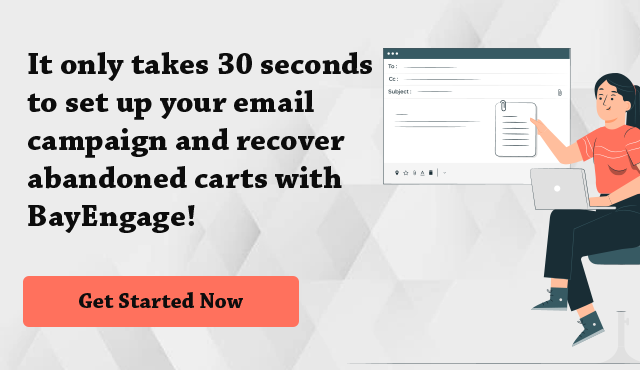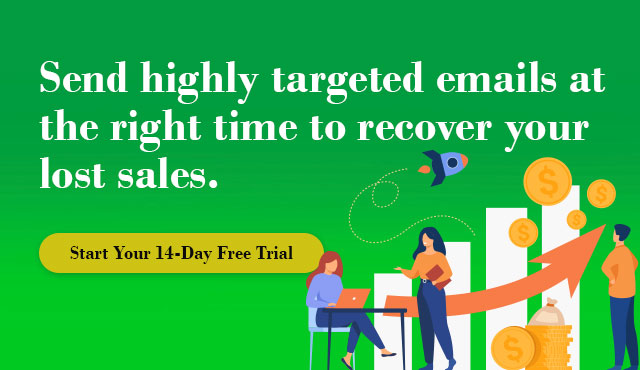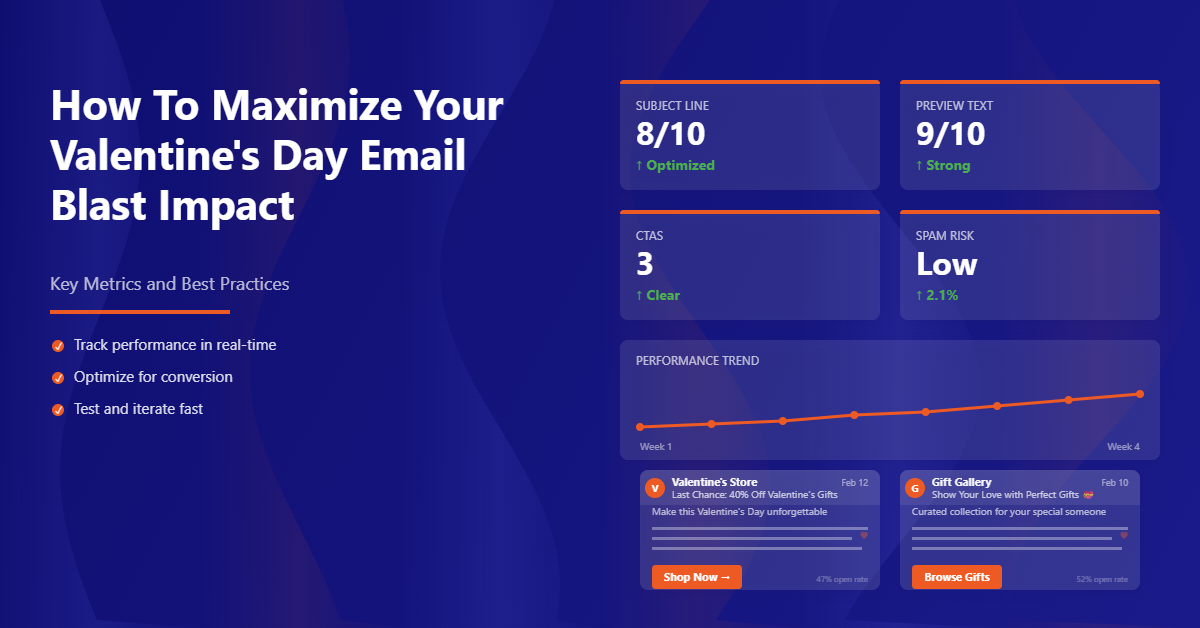Undoubtedly, abandoned cart emails are one of the effective ways to move your audience down the funnel to make the purchase. This can be made successful only by leveraging email segmentation before pitching which helps increase abandoned cart emails’ open and engagement rates.
Email segmentation, not only sends the email at the right emails to the right people, they help you send emails that your subscribers will love reading. Emails sent after segmenting make it more effective and help you in winning more people to complete their purchases.
So make use of every possible abandoned cart email strategy to book your sales and improve brand image.
Michael Teoh said, and I quote “There is one thing constant in this world, and that’s changed.” Although the context of this statement is different, it is fairly significant when applied to almost every aspect of a business, for instance, marketing.
Today, marketing is facing a great transformation — in an attempt to improve the reach of the world’s best technologies that can potentially improve our lives.
Marketers are adopting ways to find the right channels and time to present their ideas before the masses. Even email marketing — though it is often seen as an old school channel — has substantially changed over the years.
Back in the days, we used to send bulk emails in hopes of raising awareness about our products and to increase conversions. Now we know why it doesn’t work anymore.
Gen X, Y, and Z are tech-savvy shoppers who search for personal connections, even in marketing. The bottom line, personalization has become the foundation of new-age Shopify email marketing.
Getting Started with Email Segmentation
Your subscribers are diverse and unique individuals. This sentence summarizes the notion and the sole reason for email list segmentation.
Traditional batch and blast methods have become futile as marketing is evolving to be data-centric. The enormous spread of digital opportunities presented numerous choices from which modern shoppers can choose. Thus increased the competition, the race to be the most relevant. Segmentation is about grouping your email contacts into relevant groups based on the data you gathered.
According to studies, marketers who used segmented campaigns noted as much as a 760% increase in revenue. What’s more, segmented emails also account for at least 58% of all email revenue.
Pillars of Segmentation
There are several ways to segment your email recipients. These typically come under four categories: geographic, demographic, psychographic, and behavioral. They can be considered the pillars of email segmentation.

Why Segmentation Matters in Email Marketing?


5 Powerful Segmentation Strategies for Your Shopify Abandoned Cart Email Campaign
If you ask me to find one common challenge faced by all 500,000+ active Shopify stores, it would be nothing but abandoned carts. It goes without saying, email marketing platform for Shopify send follow-ups which is the no.1 solution to this. But do you think that merely automating your email campaigns can recover your almost-lost revenue? Not likely. Personalizing your Shopify abandonment cart email is how you make a difference. Here are some ways to group your lost shoppers for better email engagement and conversions.
Based on user status
The quality of an email campaign is always measured by how relevant the message is to each segment. A complete understanding of your target audience: their status, and how they engage with your email is how you ensure connection through relevance. Segmenting your recipients based on user status should be the first variable to consider while grouping your email list. The fundamental difference between each user is their state of relationship with the brand, otherwise status.
Below given are a few of the most common ways to segment your users based on their status.
- Prospects
- Regular customers
- First-time shoppers
- Active and inactive users
- Defectors(Previous customers who have switched to a competitor)
Identifying each user’s status helps retailers to anticipate their thought process, and create campaigns that more reflect their preferences, and also address the pain points. As for instance, one of the major factors that concern a first-time shopper will be the trust factor. Incorporating customer reviews into your Shopify abandoned cart apps will resolve this issue. Here’s an example:

On the other hand, if you are dealing with a repeat customer, you can incentivize or offer them points based on their levels of loyalty.
Based on interests
This may appear obvious, but sorting your users based on their interests and preferences is one of the highest impact segmentation strategies.
Knowing your customers’ personal and professional interests is crucial for personalization, customer engagement, and delivering value. Interest-based segmentation, when done right, can deliver personalized experiences that keep customers engaged and coming back for more. This is true regardless of whether your intent is to improve the conversions, create cross-sell or upsell opportunities, or deliver the right content to nurture customers and help move them along the path to purchase.
Digital business giants like Amazon, Netflix, and Spotify invest heavily in tracking and monitoring their customers’ behavioral interests to suggest content and products entirely based on their preferences.
A further advantage of this kind of segmentation is that you can connect the specific interests of a user with his/her’s other potential related interests.

Based on the size of the shopping cart
Here I would like to divide the cart size into three: large, medium, and small.
When it comes to a shopping cart with a lot of items, it’s safe to assume that the customer either has a need your products can meet — or has disposable income. However, since the size of the cart is comparatively large, and the value is high, you might consider offering free returns. Plus, include a “contact us” or “reach out to us” in your Shopify abandoned cart email in case the customer wants to speak to someone before he/she pulls the trigger on the purchase.

Medium and small-size carts, on the other hand, require a different approach. For a medium cart, retailers can push product recommendations or even offer free shipping. Shopping carts with relatively small size and value must be considered as a long-term opportunity. It’s important to nurture the customer relationship to increase their average order value over time. Offering discounts and including social proof are great ways to build customer relationships.
Based on the cart value
Cart value implies the total monetary value of the item or items in a customer’s shopping cart. While cart value may be similar to cart size, it’s not necessarily the same. A customer could add several low-value items or a high-value product. What we consider as a high-value cart depends on a particular brand and the products you sell.
By leveraging previous order history and current cart contents you can segment your subscribers based on cart value, and display specific offers and messaging designed to not only increase conversions but also increase Average Order Value.
To facilitate the task, you can assign a particular value to every cart that is being created. For instance, let’s say we consider a high-value cart to be greater than $300. In this case, there is a possibility that shoppers may find the cost to be a deterrent, and abandon their cart as a result. To reverse this situation, you can offer a discount or incentive, to those with carts worth more than $300 to ease their purchase journey.

Moreover, you can tweak the timing of your abandoned cart email sequence. The reason behind this is that high-value purchases need more time for consideration. Instead of sending the first email within a few hours of cart abandonment, send it the next day or the day after that.
Learn more about Shopify email automation to set up a right sequence.
Based on types of products abandoned
In addition to the cart size and cart value, products in the cart can also be used as a parameter to personalize your email campaigns.
If the abandoned products are, for instance, a portrait, sculpture, or some kind of artwork, your customers may have questions about them prior to purchase — like dimensions of the piece or how it looks in person. To address such potential questions, you might need to change the layout of your Shopify abandoned cart email to make your customer support or sales email address, links, or phone number easily accessible.
Furthermore, in the event that the customer finds a better deal elsewhere, grouping the shoppers based on individual products grant you a second opportunity to recommend similar product groups and thus increasing your chances of future transactions.
It’s Your Turn
If personalization is the decisive factor in email marketing success, segmentation is your starting gun.
An abandoned cart software is extremely effective in terms of recovering sales, but only if it succeeds to connect with the recipients personally. Making your email segmentation more sophisticated is one of the ways to make a better match between your email campaigns and your subscribers. Your email list comprises people with distinct traits, therefore, put the data you gathered on them to good use. On a comparative note, the offline and online personalities or behaviors of humans are different. However, offline factors have a significant influence on their online behavior. And this is the very reason why we recommend basic segmentation practices like demographic and geographic grouping in addition to advanced behavioral segmentation.
Want to learn more about email marketing segmentation? Check out our extensive blog Email Segmentaion. .
If you’re looking for a Shopify email marketing app, look no further than BayEngage.






